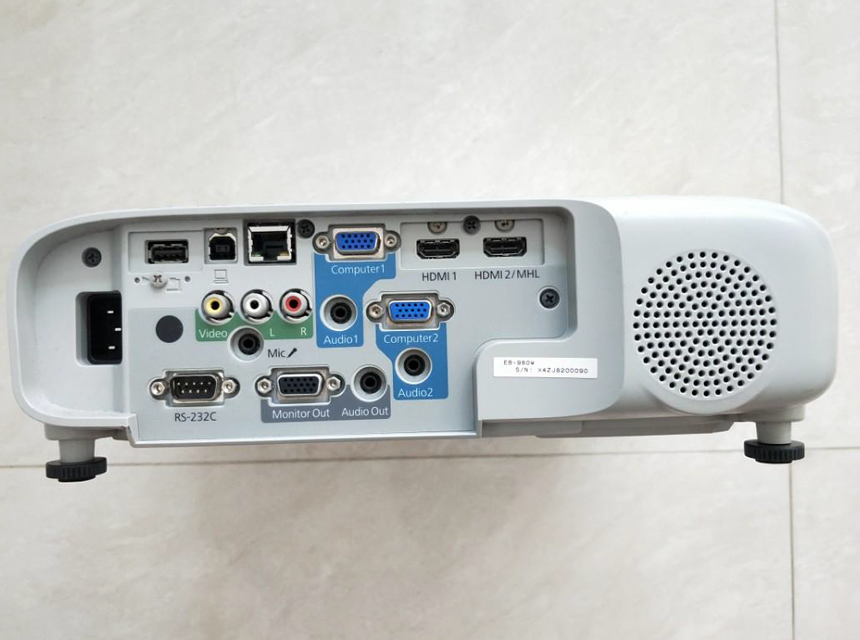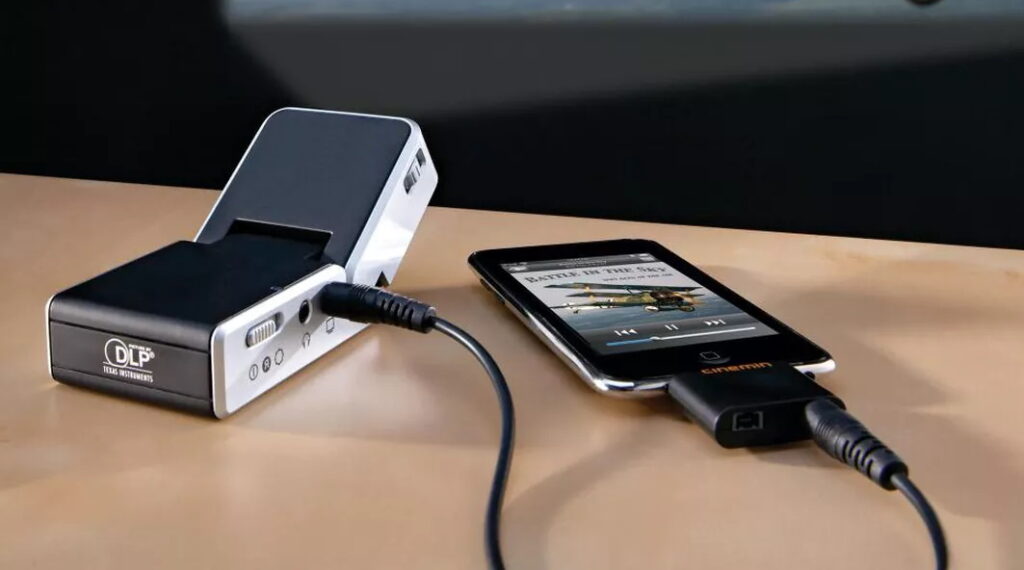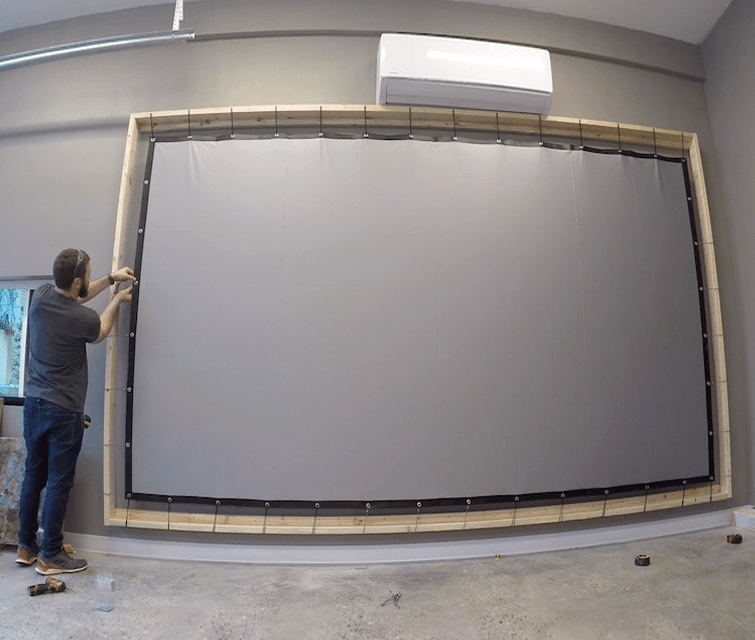Projectors are becoming increasingly popular in churches as they offer a great way to display visuals during services or events. They can be used to display lyrics, sermon slides, or even video projection mapping.
A perfect projector for church should have a high brightness level, be able to project images clearly, and be durable. It should also be easy to set up and use. In this article, we have listed the best projectors for church you can find in the market today. We will be taking a closer look at their features, pros and cons, and what makes them stand out from the rest. So without further ado, let’s get started.
Other features: 4K PRO-UHD; full 10-bit; vertical keystone correction; built-in stereo speakers; Bluetooth; lamp life of up to 5,000 hours
The Epson Home Cinema 3800 is our editor’s choice for a number of reasons. First, its 3LCD display technology ensures that visuals are clear and bright. It also has a high brightness level of 3,000 lumens, making it perfect for use in churches where there is often a lot of ambient light. Additionally, the Epson Home Cinema 3800 is easy to set up and use, with vertical keystone correction and built-in stereo speakers. Finally, its apt Bluetooth technology allows it to be easily connected to other devices for a seamless projection experience.
In our opinion, the Epson Home Cinema 3800 is not so different form its predecessor the Epson Home Cinema 3200, but is a worthy upgrade if you want better brightness and contrast. Otherwise, the projectors are almost identical in design and functionality. If you already have the Epson Home Cinema 3200, it wouldn’t make any sense to get the 3800.
Other features: ISF Modes; enhanced color wheel; 3D ready; 10-bit color processing; lamp life of up to 15,000; digital zoom; Blackboard Mode
The Optoma UHD50X is our upgrade pick for the best projector for church because it offers a number of features that make it a step above the competition. First, its DLP display technology and 40,000:1 contrast ratio deliver clear and bright images. Additionally, the Optoma UHD50X is 3D-ready and comes with a variety of input options, making it easy to set up and use. It also has a long lamp life of 4,000 hours, making it a reliable choice for churches who need a projector that will last. Finally, the Optoma UHD50X comes with a blackboard mode that is perfect for those who want to use the projector for presentations or sermons.
We found that the Optoma UHD50X is pretty similar with the equally famous Optoma UHD35. You wouldn’t be able to tell them apart at first glance. They are also not far apart specs-wise. The primary differences between them are that the Optoma UHD50X has better throw distance and throw ratio. Its projection size is also slightly bigger. As for sound quality, the Optoma UHD38 is a better option since it has a more powerful speaker.
Other features: autofocus; 8-bit color processing; 3-hour battery life; powerful dual 10W speakers; Bluetooth
The Nebula by Anker Mars II Pro is a high-quality projector that offers a great value. It has a brightness of 500 lumens and a contrast ratio of 1,000:1, making it ideal for use in church settings. What we liked best about the Mars II Pro is its autofocus technology which ensures that the image is always in focus no matter where you are sitting. The Mars II Pro also has powerful dual 10W speakers which provide great sound quality. Additionally, it supports a variety of input methods including HDMI, USB, Bluetooth, and Wi-Fi. This means that you can easily connect it to your computer, phone, or other devices. The Mars II Pro also supports screen mirroring which allows you to projected your device’s screen onto the projector. Another great thing about the Mars II Pro is its long battery life. It can last up to 3 hours in battery mode or 1.5 hours in standard mode.
The Nebula by Anker Mars II Pro has a lot of similarities with the Nebula by Anker Mars II. It only makes sense to get the Nebula by Anker Mars II Pro for improved brightness. Otherwise, the Nebula by Anker Mars II is much better. It is lighter and has a larger battery capacity. It is a better portable option.
Other features: lamp life of up to 12,000 hours; built-in 16 Watt speaker; microphone input; 10-bit color processing
The Epson PowerLite 980W has a throw distance of 4.5′ – 27.4′, making it ideal for use in mid-size churches. It features a brightness of 3800 lumens, a contrast ratio of 15000:1, and a native resolution of 1280 x 800. The PowerLite 980W also has a built-in 16 Watt speaker and microphone input, making it easy to connect to audio sources. We liked that the projector is also equipped with a digital zoom feature, which allows users to zoom in on images or videos without losing quality. Additionally, the PowerLite 980W has horizontal & vertical keystone correction, which makes it easy to adjust the projection angle to best suit the needs of the user. One potential drawback of the Epson PowerLite 980W is that it does not have a wireless connection option. However, this can be overcome by using a wired connection or by using an adapter.
If not for a slight difference in the projection size and brightness, the Epson PowerLite 980W is pretty much the same thing as the Epson PowerLite 970 W. Their design and feature are more or less the same. For brighter viewing and larger projection size, the Epson PowerLite 970W is the way to go.
Other features: 8-Point keystone correction; 30W DTS HD speakers; 32GB storage; Bluetooth; WiFi; Dolby Audio;
lamp life of up to 25,000 hours
The WEMAX Nova L176FGN projector is one of the best on the market for use in churches. It has an industry-leading patented ALPD 3.0 and TI DLP technology that provide incredible brightness and contrast. Additionally, the 8-point keystone correction ensures a perfect image every time. The 30W DTS HD speakers and Dolby Audio support provide excellent sound quality, while the HDR10 support ensures that your visuals will pop. Thanks to the Bluetooth and WiFi support, you can connect all of your devices. Finally, the laser phosphor lamp has a lifespan of 25,000 hours, making it extremely reliable.
We guarantee that the WEMAX Nova L176FGN stacks up well against other 4K laser projectors within its range like the VAVA 4K. The two have a lot in common including an ultra-short throw distance that can give you a massive screen with just a few inches of distance. Overall the VAVA 4K might appear slightly a better projector as it is brighter, and has a shorter throw distance.
Other features: sRGB & REC.709 color profile; 10-watt speaker; Lamp life of up to 15,000 hours; digital zoom
The Optoma EH412 is a powerful DLP projector with a brightness of 4,500 lumens and a contrast ratio of 50,000:1, which is ideal for use in church settings. It has a resolution of 1080p and can project an image size of up to 301 inches. The EH412 also has 1.3x zoom and RS232 support for flexible installations and is compatible with 4K UHD and 1080p HDR input. It has an accurate color reproduction with sRGB and REC. 709 color profiles, and a powerful 10-watt speaker. The EH412 also has a long lamp life of 15,000 hours and 10-bit color processing for minimal maintenance. Finally, it has a 245W metal halide bulb and digital zoom for clear images. The only downside of the EH412 is that it only has vertical keystone correction.
If you are dying to experience the brighter whites and ultra-rich blacks that Optoma projectors offer, the Optoma UHD50X is your next best bet. It is more affordable, yet brighter and just as powerful as the popular Optoma UHF50X. Its throw distance is also relatively sorter, meaning your get a bigger screen with just a few inches distance. The Optoma EH412 is therefore a better option if you want top value for money.
When it comes to church gatherings, having a good projector is important. After all, you want your congregation to be able to see and hear the sermon clearly. But with so many different projectors on the market, it can be tough to know which one is best for your needs.
That’s why we’ve put together this buying guide to help you find the best projector for your church. We’ll go over some of the key features and factors to consider before making your purchase. So whether you’re looking for a projector with great sound quality or one that’s easy to set up, we’ve got you covered.
There are a few important factors to keep in mind when shopping for the best projector for church. Below, we’ll go over some of the most important things to look for before making your final decision:
The first thing you’ll want to consider is the display technology. There are three main types of projectors on the market: LCD, DLP, and LED. Each has its own set of pros and cons that you’ll want to keep in mind.
LCD projectors are typically the most affordable option. They also tend to have lower contrast ratios, which can make them less ideal for churches with dark lighting.
DLP projectors are known for their high image quality. They often have higher contrast ratios and can produce deep blacks. However, they tend to be more expensive than LCD projectors.
LED projectors are a newer technology that offers some of the best image quality. They typically have high contrast ratios and can produce deep blacks. They also tend to be more energy-efficient than other types of projectors. However, they can be more expensive than both LCD and DLP projectors.
The resolution is another important factor to consider. Resolution is measured in pixels and determines how clear and sharp the image will be. A higher resolution projector will typically have a higher price tag.
Most projectors on the market have a resolution of 1080p, which is full HD. This is typically sufficient for most church needs.
The brightness of the projector is measured in lumens. The higher the lumen rating, the brighter the projector will be. A brighter projector is typically better for churches with large spaces and high ceilings.
Most projectors have a brightness of around 2,000 lumens. However, if you need a projector that’s going to be used in a large space, you may want to consider one with a higher lumen rating.
The contrast ratio is the difference between the darkest black and the brightest white that the projector can produce. A higher contrast ratio will typically result in a more realistic and vibrant image.
Most projectors have a contrast ratio of around 1,000:1. However, if you want the best possible image quality, you’ll want to look for a projector with a higher contrast ratio.

You’ll also want to consider the input/output options when choosing a projector for church. Most projectors have at least one HDMI input, which is the most common type of input used for streaming devices like Roku or Amazon Fire Stick.
Some projectors also have VGA inputs, which are typically used for older laptops or computers. And some even have USB inputs, which can be used for charging devices or connecting a mouse or keyboard.
When it comes to outputs, most projectors have an audio output that can be used to connect external speakers. This is important if you want to improve the sound quality of your projector.
Finally, you’ll want to consider the ease of use when choosing a projector for church. You’ll want to look for a projector that’s easy to set up and use.
The throw distance is the distance between the projector and the screen. A shorter throw distance is typically better for churches because it means you won’t have to place the projector as far away from the screen. Read our guide on the best short throw projectors for more details.
The lamp life is the amount of time the projector’s lamp will last before it needs to be replaced. Most projectors have a lamp life of around 3,000 hours. However, some higher-end models can have a lamp life of up to 10,000 hours.
The image size is the maximum size the projector can project. Most projectors have an image size of around 100 inches. However, some higher-end models can project up to 300 inches.
The aspect ratio is the ratio of the width to the height of the image. The most common aspect ratios are 4:3 and 16:9.
4:3 is the standard aspect ratio for older TVs and computer monitors. 16:9 is the standard aspect ratio for newer TVs and computer monitors. It’s also the standard aspect ratio for movies.
If you’re not sure what aspect ratio you need, we recommend choosing a projector with a 16:9 aspect ratio.
Keystone correction is a feature that allows you to adjust the shape of the image if it’s not rectangular. For example, if the image is trapezoidal, you can use keystone correction to make it rectangular.
Most projectors have automatic keystone correction, which means the projector will automatically adjust the image for you.
Some projectors also have manual keystone correction, which allows you to adjust the image yourself.
If you’re not sure which type of keystone correction you need, we recommend choosing a projector with automatic keystone correction.
Some projectors are designed to be portable, while others are not. If you plan on using the projector in different locations, you’ll want to choose a portable model.
Portable projectors typically weigh less than 10 pounds and come with a carrying case. They also tend to be smaller in size, which makes them easier to transport.
Finally, you’ll want to consider the warranty when choosing a projector. Most projectors come with a one-year warranty. However, some higher-end models may come with a two- or three-year warranty.
A longer warranty will give you more time to use the projector without having to worry about it breaking down.
Finally, you’ll want to consider the price when choosing a projector for church. Projectors can range in price from around $200 to $2,000.
You’ll want to choose a projector that fits your budget and meets your needs. If you need a high-quality projector for a large space, you’ll likely need to pay more. But if you only need a basic projector for a smaller space, you can get away with spending less.
Some projectors come with built-in speakers, which can be a great way to save money on audio equipment.
When it comes to actually using the projector, you’ll want to look for one with a remote control. This can be a great way to avoid having to get up in front of the church every time you need to adjust the settings.
Bluetooth connectivity is another feature that some projectors have. This allows you to wirelessly connect your projector to speakers or other devices. Take a look at our article on the best Bluetooth projectors if you want to know more about this feature.
If you’re not sure what size screen you need, we recommend choosing a projector with a built-in calculator. This can help to determine the best screen size for your space.
– Do make sure the projector is level and at the correct height.
– Do clean the lenses regularly to avoid dust and debris build-up.
– Do invest in a good quality screen.
– Don’t put the projector in a high-traffic area where it could be knocked over.
– Don’t put the projector in direct sunlight, as this can damage the lenses.
– Don’t forget to turn off the projector when you’re finished using it.
If you’re not sure how far away the projector should be, we recommend checking the manufacturer’s instructions.
In general, the projector should be about 10 feet away from the screen for every foot of screen width. So, if you have a 10-foot wide screen, the projector should be about 100 feet away.
Another option is to use Velcro strips to secure the cords to the floor or baseboards. This can help to keep them out of sight and out of the way.
Finally, you can use wire management systems to organize and hide the cords. These typically consist of a series of hooks or clips that can be used to route the cords in a specific direction.
So, if you’re looking for the best projector for church, we recommend the Epson Home Cinema 3800. It features 4K PRO-UHD resolution, and a true 3-chip projector design that delivers clear and bright images. With built-in stereo speakers and Bluetooth connectivity, it is quite easy to use.
The Optoma UHD50X is a great choice for those looking for an upgrade from their current projector. It features 4K Ultra HD resolution, 3D Ready technology, and a long lamp life. It also has a variety of input options, making it easy to connect to different devices.
Also, we recommend the Nebula by Anker Mars II Pro, which is our third pick for the best projectors for church. This projector is designed for use in small spaces and is very easy to set up and use. It’s also one of the most affordable options on the market, making it a great choice for those on a tight budget.





